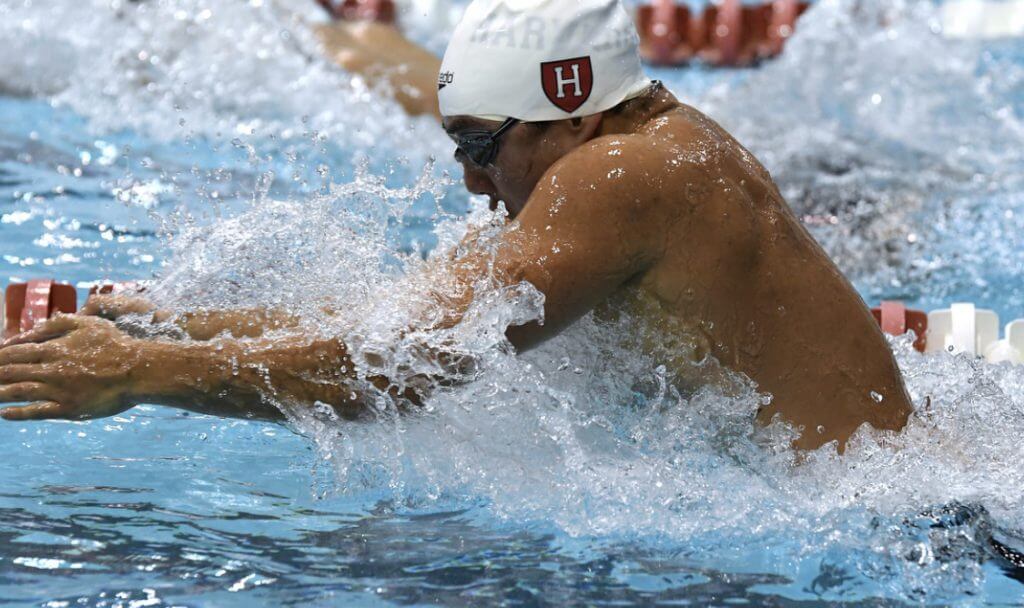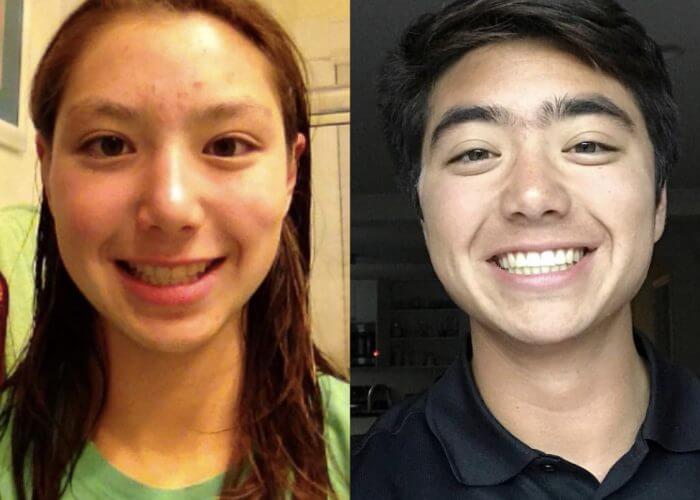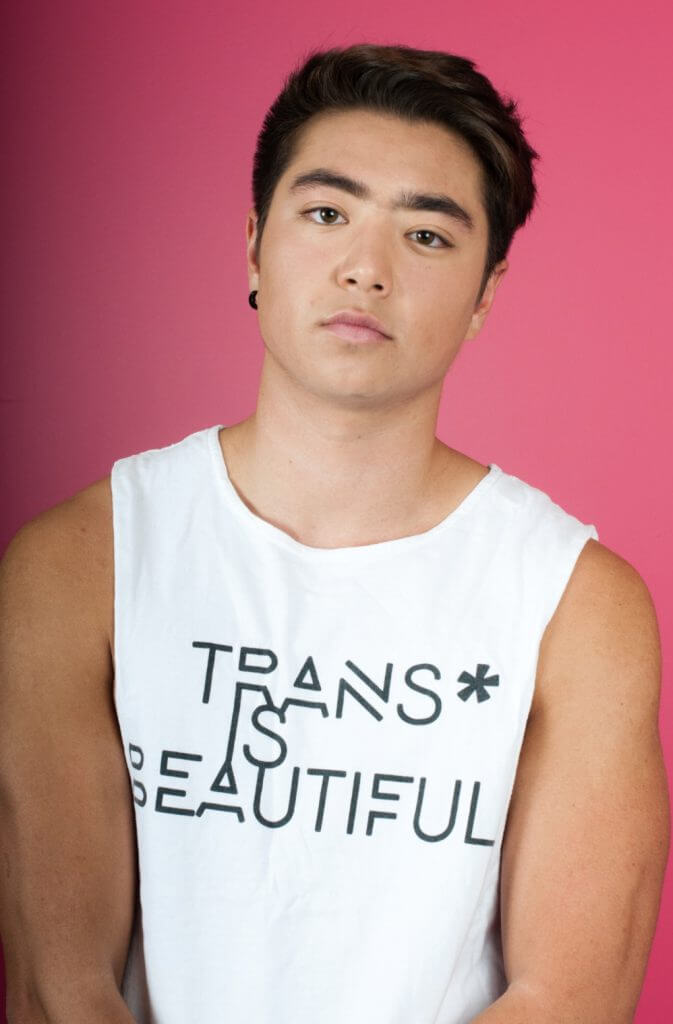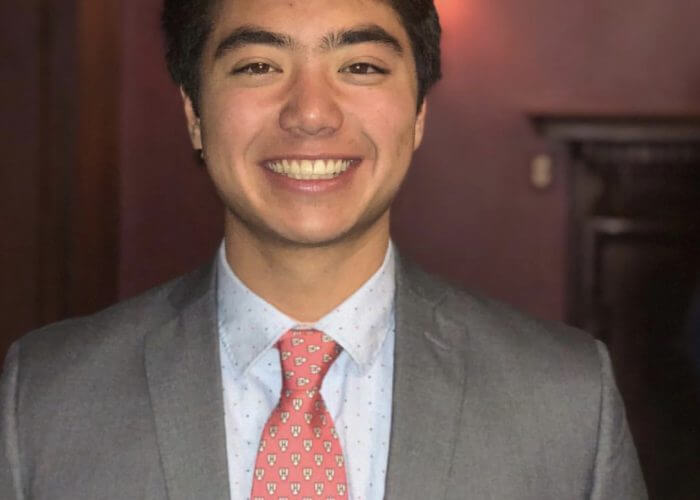Q&A with Schuyler Bailar, the First Openly Transgender NCAA Division I Swimmer

By Makena Markert, Swimming World College Intern.
Schuyler Bailar, a rising senior at Harvard, is the first openly transgender NCAA Division 1 swimmer. First recruited as a female to swim on the women’s team, Bailar transitioned in 2015 and now competes on the men’s team. He is supported by coaches and teammates alike, pursuing their common bond of swimming.

Photo Courtesy: Schuyler Bailar
The Younger Years
Bailar has always loved the water, starting in a mommy-and-me class when he was just under a year old. Bailar competed in his first meet at the age of seven and swam in the Junior Olympics just three years later. By age 13, Bailar qualified for his first national level swim meet. Less than two years later, Bailar was ranked top 20 in the US for 15-year-old breaststrokers.
After a back injury in 2012, Bailar bounced back to win all three of the D.C.-area girl’s 100-yard breaststroke championships and qualified as an All-American. At the 2013 NCSA Jr. National Championships, he qualified for the US Open – the fastest meet in the country for a non-Olympic year. At the 2013 USA Swimming National Championships, Bailar’s 400-yard medley relay team – including Katie Ledecky, Janet Hu and Kylie Jordan – set the US 15-18 year-old Age Group National Record.
Struggling with Gender Identity
Throughout his life, but particularly in high school, Bailar struggled with issues of body image and battled an eating disorder. During the spring of his senior year, he decided to take a gap year before attending college. This was a big decision, as Bailar was a highly-sought-after recruit and was wanted by many different prestigious institutions.
Through attending therapy, it became clear that the root of his struggle was with gender identity. Bailar stayed true to himself and decided to transition to be a man, accepting the challenges and obstacles this would throw his way. This decision was a huge one to make, especially considering Bailar’s success as one of the top female breaststrokers in the nation. Regardless, he wanted to begin the journey of being who he was meant to be – a man.

Photo Courtesy: Amos Mac
Becoming a Man
Steps in his transition from female to male include top surgery for breast removal, as well as receiving testosterone. The decision to swim on the men’s team at Harvard meant he could undergo testosterone treatment and be completely himself.
Bailar recently sat down with Swimming World to open up about college swimming and beyond.

Photo Courtesy: Schuyler Bailar
Swimming World: What have you been doing this summer?
Bailar: This summer, I am taking a physics class at Harvard—a generic class I needed to take. It’s on Monday and Wednesdays. I don’t really do much else… I’ve been playing a lot of guitar since I promised myself I’d learn this summer. I do that about an hour a day. I make sure I’ve been answering emails for my pinkmantaray stuff. I hang out with friends.
SW: It’s your final year in college. What are you looking forward to this year, and what are you going to miss the most?
Bailar: Oh gosh. Well, this is my last year of competitive swimming the way I’ve known it for 17 years of my life, so I just want to make the absolute most of it. I really want to make sure to spend time with teammates, and I don’t want to hate any of my practices. Perspective is huge and making sure the reason I’m doing it is because I love it.
As far as it being my last year at Harvard, we college students have to do a lot all the time. It’s often, “Oh my gosh, I have so much homework!” Classes are hard, but the reality is that this type of education is a huge privilege; being here at Harvard is a huge privilege. I have always tried to keep that in mind, especially when things are hard. I try to remember that this is a huge opportunity and don’t want to waste it. Time really slips through your fingers. People always say, “You’re going to miss it when it’s gone;” or “Make the most of it;” and “Don’t take this for granted.” So I really want to live up to that this year. I don’t want to spend any of this year miserable.
SW: How has your college swimming career been similar and different from what you expected?
Bailar: You know, I don’t know how many expectations I really had coming in, especially after swimming for the men’s team. I think I had very few expectations honestly. I mean, I wanted to swim because I love swimming. I am still swimming today because I love it.
There are so many things that could have stopped me. With that being said, there have been difficult times dealing with injuries. How I’ve trained is different in terms of how much I am able to do. I’m the type of person who likes to make sure I’m doing every single practice and going hard all the time, but a big part of training for me is resting.
SW: What’s a typical day like for you in season during the school year?
Bailar: So in season, I get up around six and have a little yogurt squeeze or a Popsicle if I’m feeling lucky. Then, I bike to practice, which takes a few minutes. I get in the pool, swim from 6:30 a.m. to 8:30 a.m., and then I’ll either go right to the trainer afterward to get ice or a massage.
I’ll go right to class depending on the day of the week. Sometimes I’ll have just one class or two; sometimes I’ll have five. It just depends on the day. Then, I go back to practice in the afternoon from 2:45 to 4:45 for lift and strength training, and sometimes I’ll go back to the trainer. After practice, I’ll eat dinner with the team or with some friends, and then maybe do some homework. I normally go to bed between 10 p.m. and midnight. I’m not big on doing homework past like 8 o’clock. I’m the kind of person who does a lot of homework on the weekends.
SW: What are your plans after graduation?
Bailar: So I threw around the idea of med school and the idea of grad school for psychology, but it’s looking like I’m going to be working in Seattle where I worked last summer. I’m probably going to work there first for a few years or so and then decide if I want to go back to school.
SW: I’m sure some days have been harder than others. What keeps you grounded on hard days?
Bailar: I do a few things. First, my immediate friend group and the people around me. When things are hard, I sink into a feeling of loneliness. But seeing other people going about their days gives me hope that my day will continue on, too. I will be okay.
Second, I do various other internal things for myself— a workout, a bike ride, writing in my journal. Swimming has always also been a home for me. It’s probably the most grounding thing in my life.
Lastly, my Instagram. There are so many people I get to connect with there, and that connection is helpful in keeping me grounded and hopeful.
SW: Who are your heroes?
Bailar: My parents are my biggest heroes. I try to emulate both of them in character, practices, habits and how they live. They have taught me about the world and how to carry myself. I think when people ask me this question, they expect me to have a trans role model, but the reality is I didn’t keep up with the media much as a kid. I didn’t ever see myself in the media. I’m a pretty intersectional person. I’m half Korean, an athlete, a student, a transgender. I found myself very much “in between” growing up, but I am now proving that a whole me exists—a half-Korean a transgender student-athlete exists. I will add, though, that Chris Mosier is another trans athlete whom I look up to. I met him after transitioning. But mostly, I look up to the honesty in people just being themselves.
SW: Your story is inspiring and you are a role model to so many. What is something you’d like to say to anyone who looks up to you?
Bailar: I’m all about being an inspiration to other people, but I think there is a danger in trying to replicate other people’s lives. So when they say they look up to me or want to be me, I say: “You want to be you.” I’ve looked up to other people and their experiences, but I’ve always wanted to be me.
The whole point of my transition was to be me authentically. To everyone out there, I’m so thankful and very flattered and humbled, but I want people to be themselves. Be you. The biggest thing I try to show is the possibility of living however it is that you want to live—what holds true for you. Proving that possibility of living your way.



